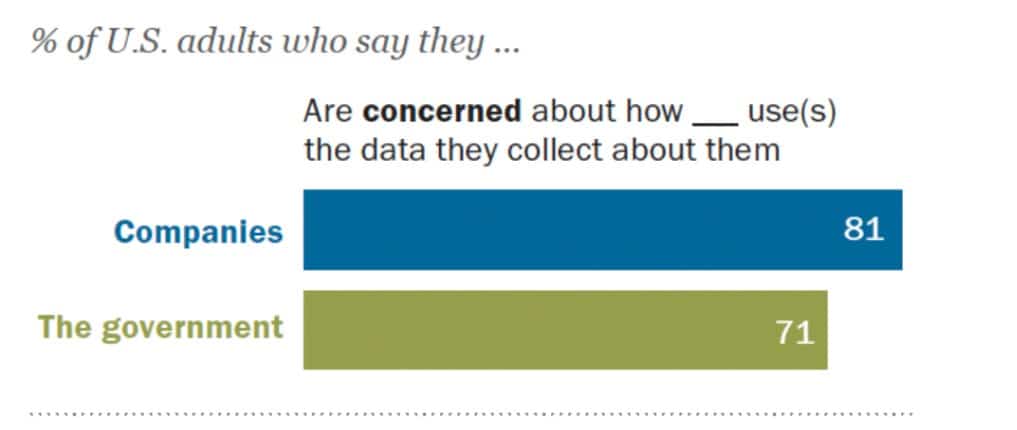Data is the lifeblood of modern marketing. It helps us to understand our customers, their habits, likes, and dislikes. By having a data-driven approach to content that appeals to these preferences, we can reach shoppers in more targeted ways than ever.
But to achieve these goals, we need to collect lots of data. And recently, due to the tightening of global privacy legislation, this task has become much harder. To stay compliant and avoid a PR nightmare, it’s critical to have a first-party data strategy. But what is first-party data and how can it be gathered successfully? We’ll explore that and more below.
Understanding first-party data
To put it simply, first-party data is data you personally collect. For instance, when you record user interactions on your website, this is first-party data. There are lots of other instances where you might gather first-party data.
Let’s say you have invested in the best digital business card. You now want to create a profile of the sorts of users who choose to download your card. Modern tools enable you to do this easily. This is an example of data that you have collected – in other words, first-party data.
Some other examples are listed below:
- From your email marketing.
- Via your social media posts.
- Information you gather in your customer relationship management (CRM) tool.
Third-party data, on the other hand, isn’t collected by you. Here, entities known as ‘aggregators’ will pay brands for their first-party data. They’ll then sell this information to other brands looking to broaden their data sets.
You may already allow third-party cookies on your website as an extra revenue stream, or you might purchase the data yourself. Either way, this could be a problem. Let’s look at why a first-party data strategy is the better way forward.
Why a first-party data strategy is important
Image sourced from pewresearch.com
Around the world, people are becoming much more wary of companies collecting their data. They’re not keen on brands profiting from their personal information. A recent Pew survey underlines the strength of feeling—72 percent of Americans call for tighter regulations on data collection.
Many large tech platforms are already responding to this. Google, for instance, is removing third-party cookies from its Chrome browser. Ultimately, if your brand wants a steady flow of data, a first-party strategy is the only route forward.
6 steps for building a first-party data strategy
Wondering where to start with your first-party data strategy? The following steps will help guide you on the right path.
1. Create a roadmap
Setting goals is essential for your data collection. Gathering data and hoping for the best, though, won’t get you far. But goals alone aren’t enough to carry you to success. To help define a clear roadmap going forward, ask yourself some of the following questions.
- What are your overall business goals?
- How can data help to reach these goals?
- Do I currently have access to this data?
- If not, how will I gather it?
At the end of this process, you should have identified several objectives, as well as methods of meeting them. Of course, you won’t be able to tackle all your goals at once. Start with the most important and carry on from there.
Additionally, consider introducing enterprise architecture to align your IT systems with your data objectives. A major benefit of enterprise architecture is ensuring you have the IT infrastructure to support data collection. Bringing your systems up-to-date is essential for ensuring you can gather the information you need.
2. Choose metrics to track your progress
Gathering lots of data is useful, but are you really on track to meet your goals? Each objective will need a unique set of KPIs to help your progress. Consider these carefully and make sure they’re in place before beginning your first-party data strategy.
Your chosen KPIs will vary depending on the unique circumstances of your campaign. With that in mind, here are some metrics that may be useful to you.
- Conversion rate: The percentage of users completing key interactions on your website. As you make data-driven decisions to improve your marketing, this percentage should increase.
- Marketing return on investment (ROI): How much does your company spend on marketing compared to the amount of revenue it generates? Your data strategy should enable you to spend less and generate more.
- Customer retention: As you try out new content marketing hacks based on customer data, you should find that more users stick around.
- Brand awareness: Is data helping your brand to reach new audiences?
- Sales qualified leads (SQL): Potential customers deemed ready to progress to the next sales stage. Data should help you to identify successful prospects more easily.
3. Improve your customers’ user experiences
First-party data is only useful if it can provide actionable insights. You need to understand how your customer ticks to help you boost your customer service. For that, you need quality data based on detailed customer journeys. You won’t get this with high bounce rates.
Ask yourself, what customer experiences are you providing to users on your platforms? After all, users won’t stick around on a slow-loading or difficult-to-navigate website/app. Thankfully, as innovations like AI emerge, it’s easier than ever to find tools that can identify and even correct website errors.
Integrating AI Marketing solutions can offer real-time personalization, optimizing user experiences and driving engagement.
A search engine optimization (SEO) strategy should be your next port of call, helping to ensure content can bring valuable insights. By building your content around keywords relevant to your audience, you can answer the questions they’re asking.
4. Pick the best analytics tool
Raw data isn’t much use (unless you’re training an artificial intelligence). You’ll need analytics tools to unpack your data and give you the information that you need. Choosing the right analytics tools for your business is an essential part of your first-party data strategy. Capability modeling can help you gain a better understanding of your needs, and the best tools for meeting them.
Whatever analytics tool you use, look for some of the following features:
- Customizable dashboards: You should have easy access to all the reports, metrics, and visualizations that matter to you.
- Scalability: Your chosen tool should easily be able to accommodate your changing data needs.
- Integrations: A tool should be capable of drawing data from marketing tools, such as an ads platform.
- Compliance: A solution should allow you to collect data in a compliant way, and adapt to new legislation.
Additionally, consider implementing an online booking system to streamline customer interactions and enhance user experiences on your platforms.
5. Build customer trust and boost your PR
Few things will impact your business’s PR more than problems with customer data. If you aren’t clear and open about the way you use data, you’re heading for trouble. For a successful first-party data strategy, trust is key. Legislation like GDPR and CCPA are all built around gaining explicit consent. You need permission from customers before you can collect any data. So, no customer consent = no data.
To win customers over you’ll need to prove that you care about their privacy. This should begin with a comprehensive privacy policy that lists everything that you do with the data. Alongside this explain why you need the data and the steps that you’re taking to keep information safe.
Say what you mean and mean what you say. There’s no point saying you value customer privacy if you’re storing data in insecure ways. To win customers over, they need to see you putting words into action.
There’s no harm in regularly reminding customers about how to take steps to improve data privacy. For example, if you’ve introduced new security systems, notify your audience via social media or email. The more you drive the message home, the more convincing you’ll be.
6. Organize your data
As you embrace digital transformation the ability to collect data increases dramatically. You might have upgraded your website analytics or taken your phone system online. The great news is that this gives you more data. But, beware, If you’re collecting massive amounts of data daily things can become messy quickly. To be effective, data should be accessible and above all organized.
To put this into perspective, let’s imagine you’ve printed off a marketing plan. When you come to find your document, you find pages that have been left scattered in different places. What’s more, you’ve forgotten to include page numbers. When you try to compile your document, not only does it take a long time, but you’re not sure what order the pages should go in.
Unorganized data can be just as time-consuming and difficult to decipher. So, make sure your data is collected and managed in an organized way. This means considering the following factors:
- You have conducted capability modeling.
- You have a storage facility capable of handling your data-collecting operations.
- You have a consistent naming convention for entries so that data is easy to find.
- Data is annotated to provide additional context for those searching at a later date.
- Sensitive information is stored in a different, access-based location.
Kickstart your first-party data strategy
In our increasingly digital world, data is only going to become more essential in marketing. If you’re largely reliant on third-party data, now is the time to reconsider your approach. Crafting a first-party data strategy might take time, but be assured that the benefits will outweigh any effort.
With higher quality data you can produce more targeted and effective marketing. You can build more brand recognition, boost your PR, and get ahead of your customers. Most importantly, with a more open and honest approach to customer data, you’ll build more trust and loyalty.
So, stick to our tips and kickstart your first-party data strategy. We can promise that you won’t regret it.













